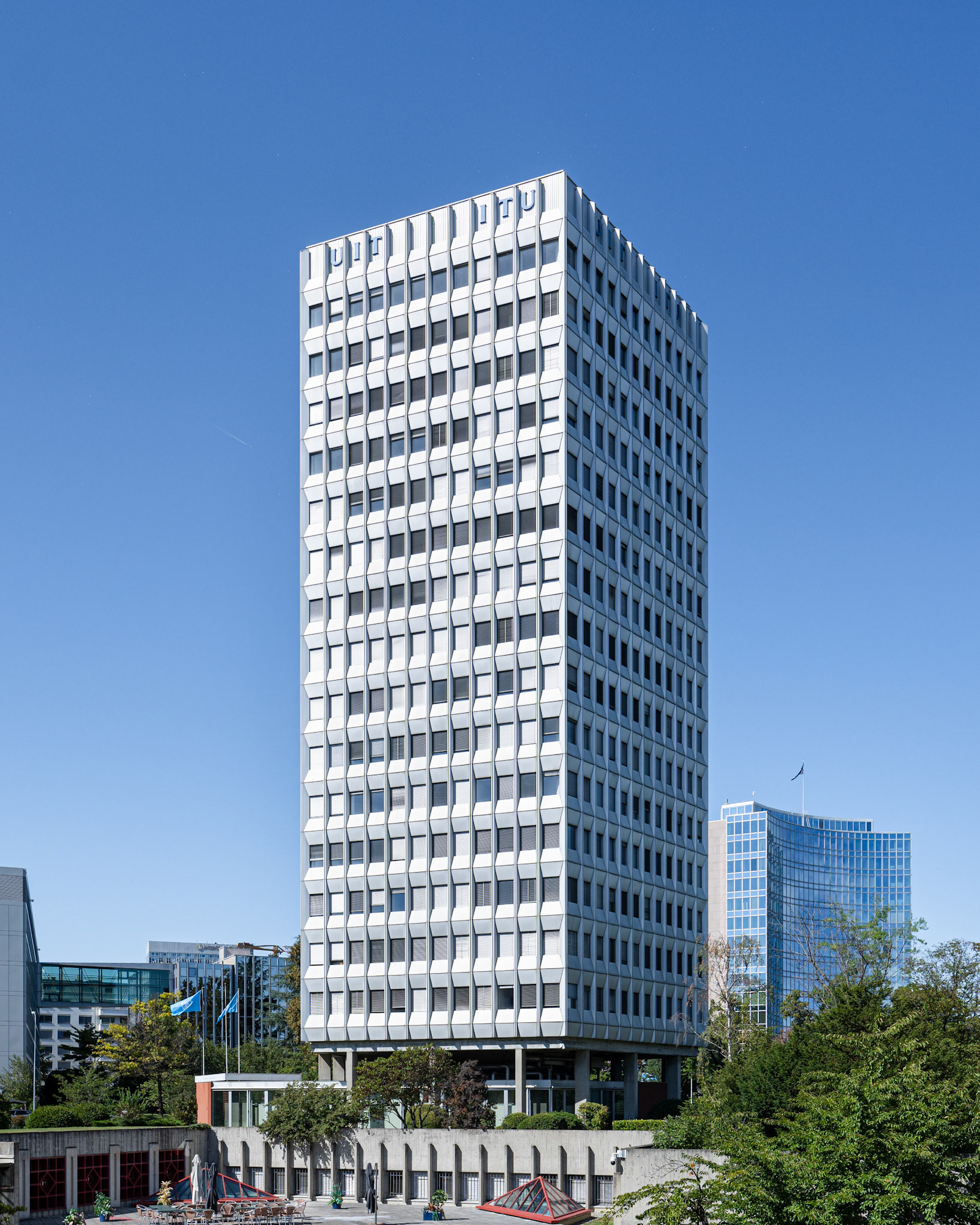The International Telecommunication Union (ITU), founded in 1865 as the International Telegraph Union, is one of the oldest international organizations still in operation today. It was established to create a framework for coordinating the growing international telegraphy networks, which were becoming crucial for global communication. In 1932, its name was changed to the International Telecommunication Union to reflect the broader scope of telecommunications technologies, including radio and telephone systems. The ITU became a specialized agency of the United Nations in 1947, further solidifying its role as a global authority in regulating and standardizing telecommunications technologies. Today, it plays a pivotal role in managing the global radio-frequency spectrum, satellite orbits, and developing technical standards that ensure seamless interconnectivity between telecommunication systems across the world.
The ITU Tower in Geneva was constructed between 1970 and 1973 to plans by André and Didier Bordigoni. Standing at 57 meters tall, the tower in the international style comprises 15 stories and serves as a key part of the International Telecommunication Union's headquarters. Its distinctive façade, coated in natural cast aluminum with a relief design, creates a striking sculptural effect through the interplay of light and shadow.

ITU tower
You may also like